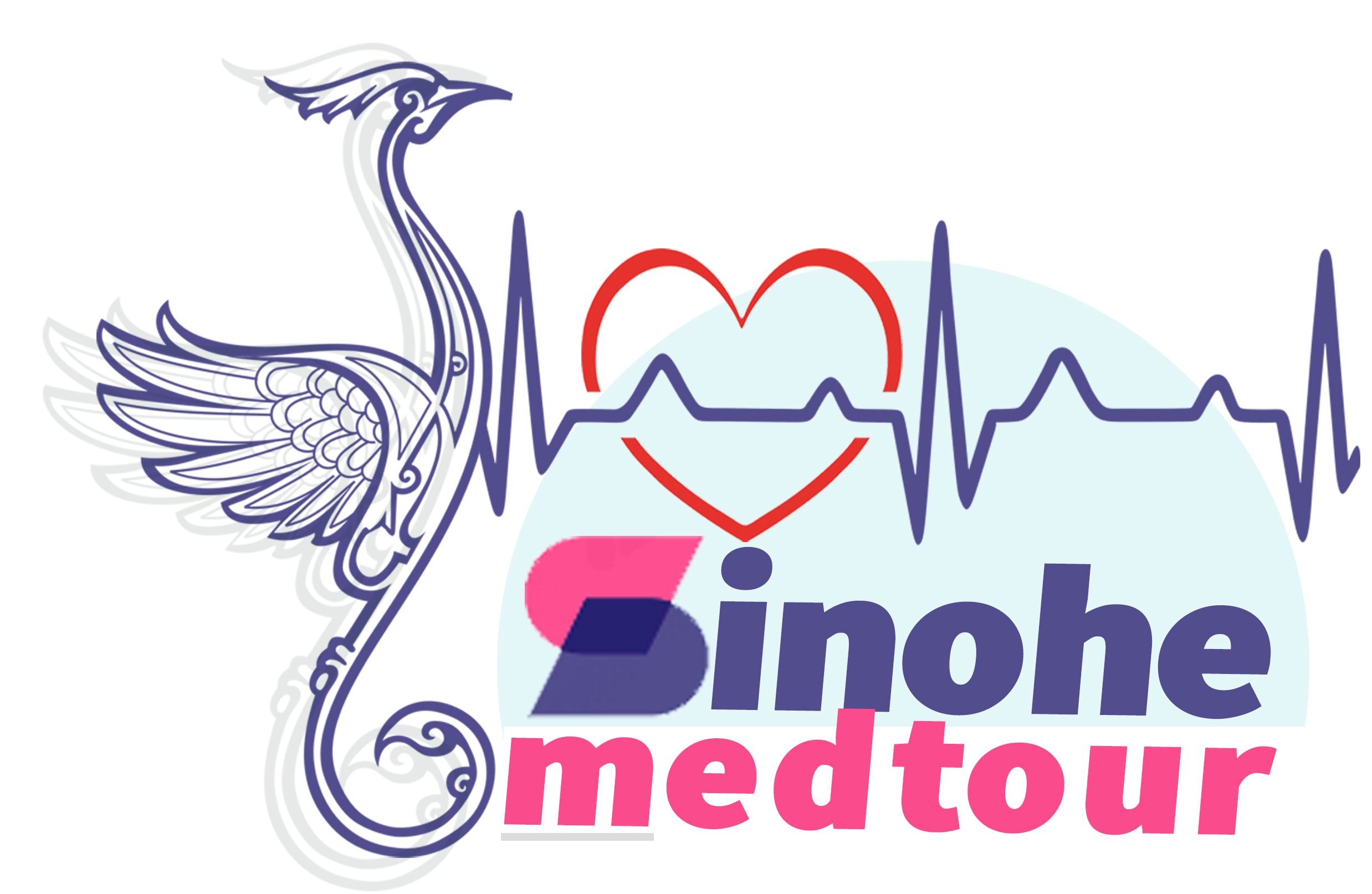ENT TREATMENTS IN IRAN
treatments in Iran within your reach with our medical tourism services.
Iran possesses a rich resource of specialists armed with the most up-to-date knowledge of the ENT specialty. With its developed medical infrastructure, reasonable costs of healthcare services, and highly qualified otolaryngologists, Iran is a perfect destination for foreign people who want to get a high-quality and affordable ENT treatment. We at AriaMedTour are prepared to help you with getting an ENT surgery or non-surgical treatment with the best Iranian otolaryngologists.
Why SinoheMedTour?
SinoheMedTour is the most professional medical tourism company in Iran, which offers various services to patients who want to save themselves the hassle of arrangements for a trip and surgery in Iran. With SinoheMedTour, you can rest assured that your ENT treatment experience in Iran will go well.
ENT Treatments
ENT TREATMENTS IN IRAN: ALL YOU NEED TO KNOW
Otolaryngology, commonly known as ENT (Ear, Nose, and Throat) is a branch of medicine that specializes in diagnosis and treatment of disorders of Ear, Nose, and Throat. In a broader view, it specializes in head and neck diseases, providing comprehensive services for all ages, from newborns to adults. Iranian otolaryngology specialists are among the best in the Middle East, offering ENT services using the latest approaches and technologies.
Coping with chronic ear infection, tonsillitis, sinus problems, impaired sense of hearing, problems in eating, breathing and speech, malignant and benign tumors in ears, nose, throat, head, and neck, acid reflux (GERD), and cancers such as oral, salivary gland, and skin cancer affecting the head, neck, and nose, are some common examples within key areas of concern in ENT.
Among a wide range of symptoms that can be associated with ear, nose, and throat problems, the most common are listed below:
Dizziness, Watery and itchy eyes, Runny and itchy nose, Nose bleeds, Painful or swollen ear(s), Ringing or buzzing sounds (tinnitus), Hearing loss, Blockage or a full sensation in the ear, Sore or swollen throat, Loss of voice (laryngitis), Jaw pain, Excessive snoring causing frequent waking
To relieve the troubling symptoms, our highly skillful ENT specialists with years’ of expertise, perform a number of helpful procedures including: sinus surgery, pediatric ENT surgery, head and neck surgery, and Balloon Sinuplasty.
It is also noted that facial plastic and reconstructive surgeries are also within the area of expertise of ENT.
ENT has a wide range of sub-specialties; each includes various treatments. ENT’s sub-specialties are as follows:
Otology: Otology focuses on treatment of infection, disease, and damage to ear.
Rhinology: The main focus of Rhinology is treatment of sinus and nasal disorders to improve breathing and nasal function.
Laryngology: Laryngology focuses on treatment of the infections of throat and larynx to facilitate speech.
Head and neck surgery: Head and neck surgery specializes in surgery on cysts, salivary, thyroid and parathyroid glands, and head and neck cancers.
Facial plastics: Facial plastics refers to cosmetic procedures including Rhinoplasty, and face lifts, and also reconstructive procedures such as resetting the jaw.
Pediatrics: This field of ENT specializes in problems requiring treatment at a very young age. These problems include airway problems, infections of adenoids or tonsils that require to be removed.
WHY EYE SURGERY?
Eyeglasses used to be the only solution for refractive errors of the eyes for more than seven centuries until the 1950s when contact lenses gained widespread popularity. And if someone had cloudy eye due to what is known as cataract, they had to either endure the cloudy vision for the rest of their life or undergo a gruesome surgery, called ‘couching’, in which a traditional medical practitioner uses a sharp needle to dislodge the cataract of the eye and push it into the eyeball so that the light would enter the eye.
Interestingly enough, couching cataract surgery is still performed in some parts of developing countries such as African nations, where modern eye treatments aren’t available for most people. This traditional cataract surgery is not an effective treatment, though, with a small percentage of satisfaction rate and more than 70 percent of cases being left totally blind.
Today, thanks to advances in medicine and medical technology, not only can refractive errors be corrected with refractive eye surgery or vision correction surgery — eliminating the need for glasses and contact lenses in many cases — but other eye conditions such as cataract and glaucoma can be treated with painless surgery and high success rates.
Keeping pace with the latest trends in eye care and boasting a host of modern eye centers and proficient eye specialists, Iran is one of the best countries for eye surgery, offering affordable treatments to Iranian patients and foreign medical tourists who want to have their eye surgery abroad at affordable prices.
REFRACTIVE EYE SURGERY IN IRAN
Refractive surgery refers to a wide range of eye surgeries aimed at correcting the refractive properties of the eye in cases that light is not properly focused onto the retina, including those suffering from myopia (nearsightedness), hyperopia (farsightedness), presbyopia (an age-related type of farsightedness, mostly affecting people over 50), and astigmatism.
Also known as vision correction surgery, refractive eye surgery includes procedures that use a laser to alter the cornea of the eye, including LASIK and PRK, and those involving placement of artificial lenses into the eyes to provide the individual with a clearer and sharper vision.
We at SinoheMedTour work with some of the best eye hospitals in Iran and the best ophthalmologists to offer all types of refractive eye surgery to patients coming from other countries, where eye surgery is expensive or there is a lack of qualified specialists.
Whether you are looking for laser eye surgery (LASIK, Femto-LASIK, LASEK, PRK, etc.) or other refractive surgery in Iran, we will help you arrange your procedure with one of the best eye surgeons in Iran, in Tehran, Mashhad, Shiraz, Isfahan, Tabriz, or other cities of your choosing.
COST OF EYE SURGERY IN IRAN
Given the high availability of medical healthcare services in Iran, including eye treatments, and the devaluation of the Iranian currency against foreign currencies, the cost of eye surgery in Iran is very reasonable compared to other countries. Together with other factors such as the quality of medical tourism services, low cost of travel to Iran, and the diverse tourist attractions, the low prices of eye surgery in Iran is a good reason to travel to the country to go under the knife and get your vision back.
A pterygium is a wedge-shaped piece of abnormal tissue that grows out of the cornea. Whether or not surgical removal of a pterygium is recommended depends on its size and extent, as well as its tendency for recurrent inflammation. If a pterygium is small but becomes intermittently inflamed, the ophthalmologist may recommend the use of a nonsteroidal or a mild steroid eye drop when the inflammation develops. Removal is typically recommended if the pterygium grows far enough onto the cornea to impair vision, if it causes chronic inflammation and irritation, or if it interferes with contact lens wear.
Surgical removal of a pterygium is an outpatient procedure that takes less than an hour to perform. The risk of recurrence of the pterygium after surgery can be reduced with the use of a conjunctival graft taken from under the upper eyelid that is placed over the site where the pterygium was located. The graft may be secured with sutures or with human fibrin tissue glue (sutureless pterygium surgery). In cases of recurrent pterygia, medications may be applied to the surface of the eye during surgery to reduce the risk of recurrence. For patients who have not previously had pterygium surgery, recurrence of the pterygium occurs in approximately 5-12 % of eyes within the first 1-2 years after surgery. Various kinds of eye drops are used postoperatively to decrease inflammation and help prevent recurrence.
WHAT IS STRABISMUS SURGERY?
Strabismus surgery loosens or tightens eye muscles, changing the alignment of the eyes.
WHAT KIND OF ANESTHESIA IS USED FOR STRABISMUS SURGERY?
The type of anesthesia depends on patient age and health as well as patient and surgeon preference. Most children undergo general anesthesia. Adults may have general anesthesia or conscious sedation with local anesthesia. The procedure may occur in a hospital or surgery center. The procedure is usually performed as an outpatient (patients do not stay overnight in the facility).
HOW DOES THE SURGEON APPROACH THE EYE MUSCLES?
The eye muscles attach to the sclera (outer covering of the eye). The muscles are covered by a thin layer of transparent tissue called the conjunctiva. The eyelids are held open by a lid speculum. The surgeon incises the conjunctiva to access the eye muscle(s), and uses small instruments to identify the muscle targeted for surgery. No skin incisions are made. The eyeball is NOT removed from the eye socket during strabismus surgery.
WHAT IS A RECESSION?
A recession weakens function by changing the attachment site of the muscle on the eyeball. Once the muscle has been identified, a stitch is placed through the muscle. The muscle is cut from the surface of the eye and stitched back to the eye in a new—weaker location. The muscle is no longer taut, similar to an elastic band that has been released. This effectively reduces the resting tension of the muscle.
procedure the muscle is cut from the surface of the eye and reattached further back from the front of the eye.
WHAT IS A RESECTION/PLICATION?
A resection strengthens muscle function by shortening the muscle and then reattaching it to the eyeball at its original position, similar to cutting an elastic band, but still stretching it to the original length. A suture is placed through the muscle at the new intended length. The segment of muscle between the suture and the eyeball is removed or folded over (plication), and the shortened muscle is reattached to the eye.
WHAT IS AN ADJUSTABLE SUTURE?
Strabismus surgery involves sewing the eye muscle to the outer covering of the eye after altering the insertion position and/or the length of the muscle. Standard strabismus surgery without adjustable suture utilizes a permanent knot tied during the surgical procedure. Adjustable suture technique utilizes a bow-knot or slip-knot (temporary knot) on the muscle which can be changed. After surgery, the eye alignment can be altered by adjusting the temporary knot. The adjustment is typically done with the patient awake and the operated eye numbed. Adjustable suture surgery is generally only offered to patients who are able to fully cooperate with the adjustment process. This adjustment may be done in the postoperative room, the next day, or later in the week, depending upon the surgeon’s preference.
ARE THE EYES RED AFTER STRABISMUS SURGERY?
It is normal for the white part of the eyes to be red after surgery. It may take several weeks or occasionally months for the redness to disappear. The eyes are usually scratchy and sore with eye movement. The soreness usually improves after a few days depending upon the exact surgery performed.
IS MEDICINE USED AFTER SURGERY?
All surgeons apply antibiotic or antibiotic/steroid drops or ointment at the end of the surgery. Some surgeons will prescribe a similar drop after surgery for a few days as well.
Glaucoma is a group of eye diseases that can cause vision loss and blindness by damaging the nerve in the back of your eye called the optic nerve.
If glaucoma medicines and laser treatment haven’t helped to treat your glaucoma, your doctor may recommend surgery. Surgery can’t cure glaucoma or undo vision loss, but it can help protect your vision and stop it from getting worse.
There are a few different types of surgery for glaucoma that can help lower the pressure in your eye:
Trabeculectomy (tra-BECK-yoo-LECK-toh-mee)
Glaucoma implant surgery
Minimally invasive glaucoma surgery (MIGS)
If you need glaucoma surgery in both eyes, your doctor will only do surgery on 1 eye at a time.
What is trabeculectomy?
This type of surgery is usually used to tr…
LASIK eye surgery is the best known and most commonly performed laser refractive surgery to correct vision problems. Laser-assisted in situ keratomileusis (LASIK) can be an alternative to glasses or contact lenses.
During LASIK surgery, a special type of cutting laser is used to change the shape of the cornea. The cornea is the dome-shaped clear tissue at the front of the eye.
In eyes with typical vision, the cornea bends — or refracts — light precisely onto the retina at the back of the eye. But with nearsightedness, farsightedness or astigmatism, the light is bent incorrectly. This incorrect refraction causes blurred vision.
Glasses or contact lenses can correct vision, but reshaping the cornea also provides the refraction needed to correct vision.
Nearsightedness, also called myopia. In nearsightedness, your eyeball is slightly longer than typical or the cornea curves too sharply. This causes light rays to focus in front of the retina, which makes distant vision blurry. Objects that are close can be seen fairly clearly. But objects in the distance will be blurry.
Farsightedness, also called hyperopia. In farsightedness, you have a shorter than average eyeball or a cornea that is too flat. This causes light to focus behind the retina instead of on it. This makes near vision, and sometimes distant vision, blurry.
Astigmatism. In astigmatism, the cornea curves or flattens unevenly. This affects focus of near and distant vision.
If you’re considering LASIK surgery, you probably already wear glasses or contact lenses. Your eye doctor will talk with you about whether LASIK surgery or another similar refractive procedure is an option that will work for you.
cornea to thin and bulge, such as keratoconus.
Have a family history of keratoconus or other corneal ectasia.
Have good overall vision.
Have severe nearsightedness.
Have very large pupils or thin corneas.
Have age-related eye changes that cause vision to be less clear.
Participate in contact sports that may be associated with blows to the face.
If you’re considering LASIK surgery, talk to your doctor about your questions and concerns. Your doctor will discuss whether you’re a candidate for the procedure or other similar procedures.
How you prepare
Steps you can take to prepare for surgery include:
Know what surgery may cost you. LASIK surgery is usually considered elective surgery, so most insurance companies won’t cover the cost of the surgery. Be prepared to pay out-of-pocket for your expenses.
Arrange for a ride home. You’ll need to have someone drive you to and from your place of surgery. Immediately after surgery, you might still feel the effects of medicine given to you before surgery, and your vision may be blurry.
Skip the eye makeup. Don’t use eye makeup, cream, perfumes or lotions on the day before and the day of your surgery. Your doctor may also tell you to clean your eyelashes daily or more often in the days leading up to surgery. This helps remove debris and lessens your risk of infection.



